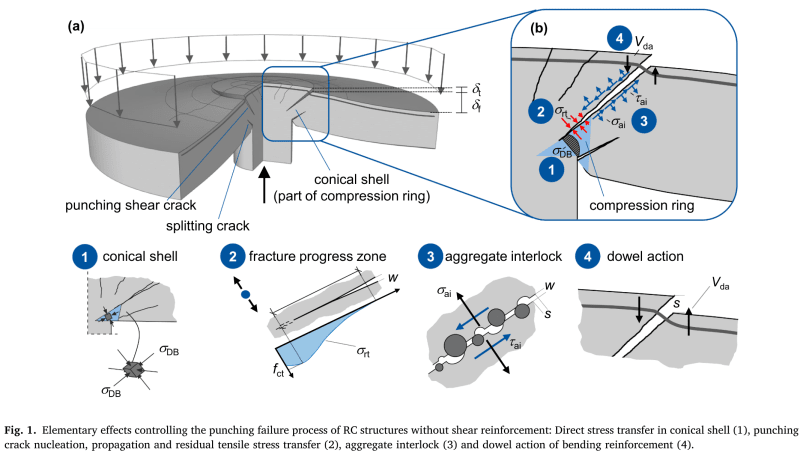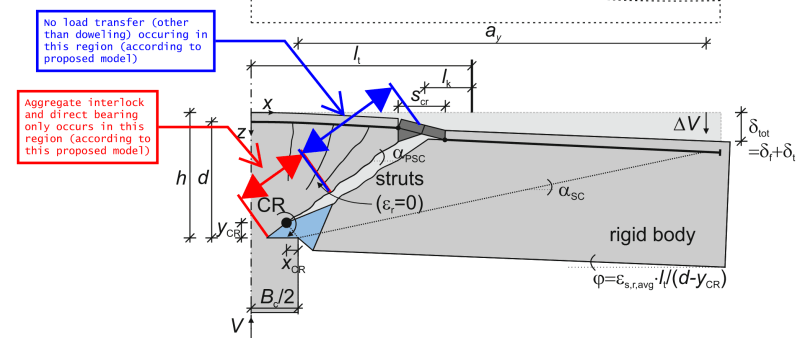Very odd punching shear situation (see attached), with 2 questions below. We do understand what the conservative/ safe routes are, but the question of “can you refine?” is being asked of us.
Looking to assess in a logical manner, I was hopeful to employ mechanical models of punching shear, such as critical shear crack theory (from the fib Model Code), or tangential strain model. ACI’s framework on punching doesn’t appear to be helpful as it is mainly empirically derived. However, fib Model Code is new to us, so appreciate any insights.
1.) If the new concrete for the (fully bonded/ composite) slab enlargement is 2x the concrete strength of the existing slab – what concrete strength should be used for punching capacity? Lets say 4ksi and 8ksi (or C30 and C60). My (perhaps incorrect) understanding of critical shear crack theory, is that for the geometry here, the new concrete is much more influential on ultimate punching capacity (see fig 3 of attached CSCT Mechanics.jpg). But how to quantify when evaluating capacity?
2.) We are obviously checking the 45 degree punching critical sections #1 and #3 in my diagram. However, section #2 seems plausible as well. If one should check it, how does one assess capacity of such a shallow punching cone? I know in theory I could start with Muttoni’s CSCT ground work and rederive the his formulas with a different angle assumption… but not confident in doing it correctly. Was hoping at very least someone might know "is section #2 is qualitatively stronger or weaker than #3?" and start from there.
Looking to assess in a logical manner, I was hopeful to employ mechanical models of punching shear, such as critical shear crack theory (from the fib Model Code), or tangential strain model. ACI’s framework on punching doesn’t appear to be helpful as it is mainly empirically derived. However, fib Model Code is new to us, so appreciate any insights.
1.) If the new concrete for the (fully bonded/ composite) slab enlargement is 2x the concrete strength of the existing slab – what concrete strength should be used for punching capacity? Lets say 4ksi and 8ksi (or C30 and C60). My (perhaps incorrect) understanding of critical shear crack theory, is that for the geometry here, the new concrete is much more influential on ultimate punching capacity (see fig 3 of attached CSCT Mechanics.jpg). But how to quantify when evaluating capacity?
2.) We are obviously checking the 45 degree punching critical sections #1 and #3 in my diagram. However, section #2 seems plausible as well. If one should check it, how does one assess capacity of such a shallow punching cone? I know in theory I could start with Muttoni’s CSCT ground work and rederive the his formulas with a different angle assumption… but not confident in doing it correctly. Was hoping at very least someone might know "is section #2 is qualitatively stronger or weaker than #3?" and start from there.


